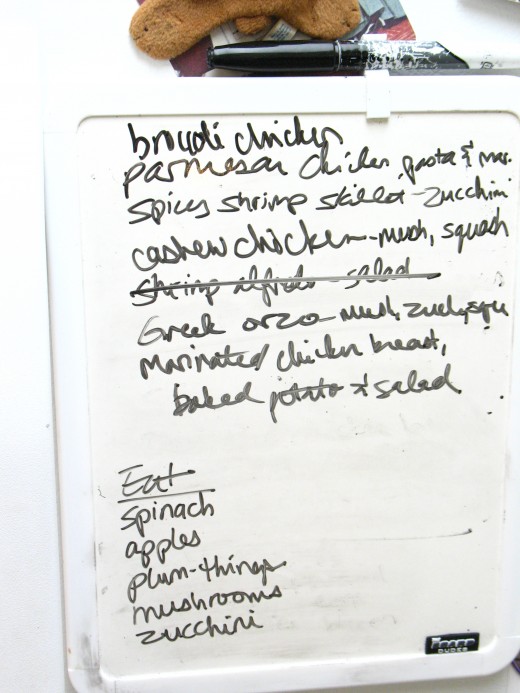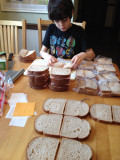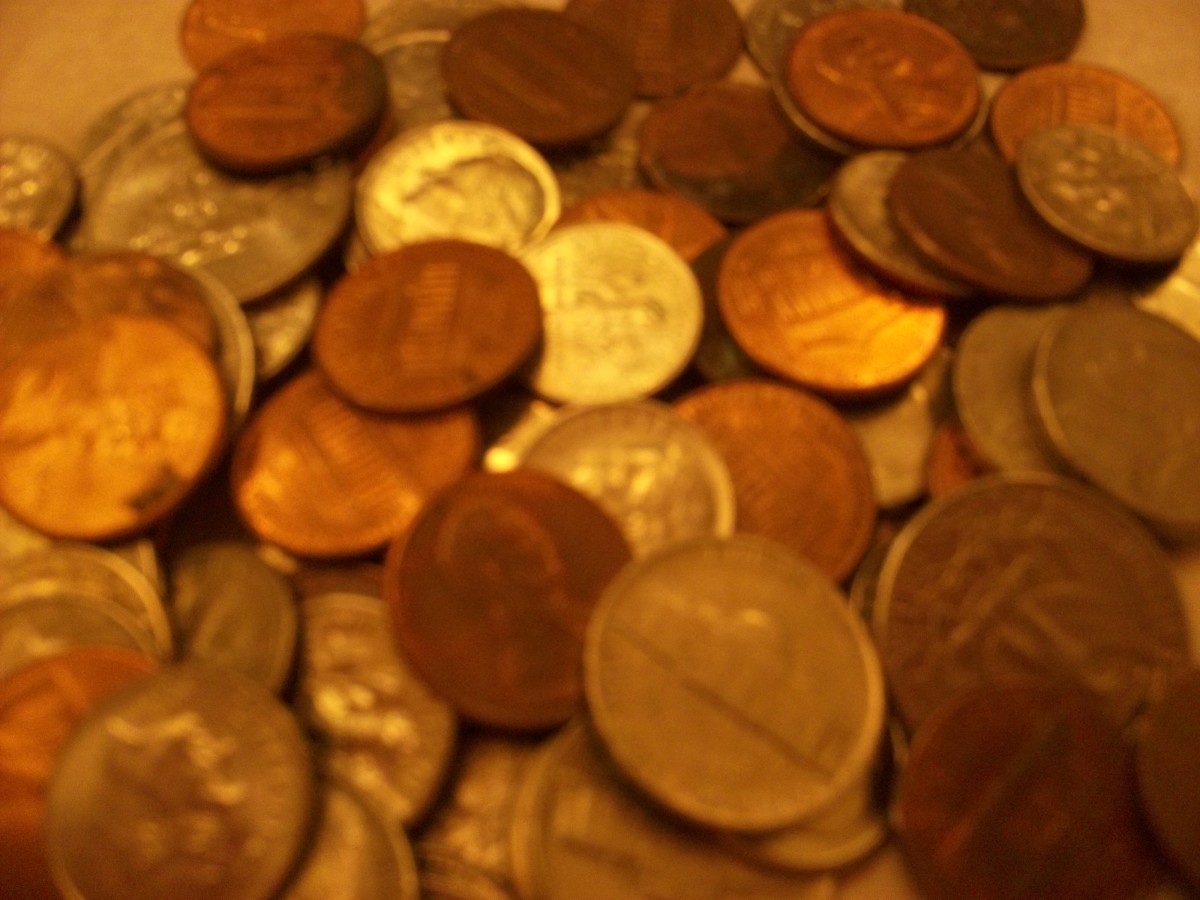Frugal Fine Dining

For the Love of Food
We love to eat. We're foodies, if you will. But in these times, how do you eat well on a budget? Can you have fine dining at home while not emptying your wallet?
Shopping at the grocery store is tantamount to being a kids in a candy shop. The blocks of fine cheese, the new flavor of ice cream, those salt and pepper kettle chips were magnets to our shopping carts and detrimental to our pocket book. To be honest, we were spending $200 a week on just groceries to feed the two of us.
Faced with the reality of a weak economy, no savings and a lot of debt, we decided that this habit needed to be curbed. Surprisingly, a few smart decisions went a long way.
To our enjoyment, we are still eating well and satisfying our love for food, yet at the same time we have cut our budget in half. And we do eat mostly organic, and try to eat as local as possible.
Here are a few simple steps that will lead you on the path of saving money, something we can all use more of now days.

Do you plan your meals?
#1 Meal Planning
Meal planning is both a fun and efficient method of saving money and your time.
Every week my husband and I sit down and discuss what we would like to have for dinner that week. We both get to choose meals and initially there are no limits to the list. For example, my husband my recommend "sake pot roast", and we will write it down, and discuss what ingredients we have on hand to make it. Make allowances for breakfasts, lunches,snacks and alcohol as well. Often snacks can be made at home for a lot less than buying convenience foods. When it comes to alcohol, a look at our meal plan helps us determine if we want a white wine with our chicken cacciatore or a beer with some homemade pizza and we can budget for that as well. Drinking for us is pairing a drink and dinner to make a culinary experience and it's worth budgeting into our weekly allowance, but maybe its not a big deal to you and can be cut out altogether. In that case it does save a lot of money!
We plan most of our meals around what ingredients we have on hand--especially fresh produce. Tonight we had cashew chicken because we had some mushrooms and zucchini we needed to use.
Once the list is compiled, we talk through the ingredients we need to buy to complete the individual dinners, and then we make a price list.
For example our first dinner this week was a shrimp Alfredo. The only things we had to buy were fresh Alfredo sauce $3 and angel hair pasta $1.75 and a bottle of "Two Buck Chuck" which, here in WA is $3. Everything else we already had. Our dinner cost us a whopping $7.75 that night, and with some crushed garlic and freshly ground pepper whipped into the sauce tossed with succulent shrimp, a salad and a glass of wine we had a meal that would cost $20 each at a restaurant.
When you go into a store, stick to your list! I know this is difficult, but this is the part that makes it possible to stay within the confines of a budget to save money and to use what you have.

#2 Pricing Things Out
This is something I've only recently started, but am already seeing the benefits. Have you ever been to a store where they have chicken stock on sale in bulk but the amount is so much you can't really tell if its a good deal or just a lot of same priced broth? Here's your answer to that.
I took an empty notebook (3 ring binder or even notes online work fine too) and began pricing items out by the pound or ounce. On a recent trip to Costco I went in with a pen and paper and walked around pricing out things that we buy on a regular basis. Costco even makes it easy by usually having the per pound amount right on the price tag.
At home I went through some of our most recent grocery receipts and priced out what we had been buying. Milk, bread, eggs, chicken, beef, cheese, wine...you name it. Each category gets its own page. I then code by store (Safeway=SW, Costco=C, Trader Joe's=TJ), exactly what it is I bought, the price, and the price per pound. It looks something like this:
TJ Frozen chicken breasts-no hormones 2.8lbs $6.99 $2.49/lb
Once I had a few entered, it was clear to see which stores had better deals on what.
Also, when we get our weekly sales ads from local grocery stores in the mail, one glance at my book tells me how good a deal it really is.
Recommended Reads
#3 Go Vegetarian Once a Week
If you had told my husband this a year ago he would have scoffed. But then I made Greek Orzo...to which he proclaimed "I could eat this EVERY WEEK!"
And for the past month we have! Not only that but this has made my husband more open to the idea of eating vegetarian once in a while. The trick is finding a vegetarian dish that is tasty and filling--I don't even notice we're missing out because we're not!
Another way we cut back on meat is making it part of the overall meal--not the center of the spotlight. Cubed chicken tossed into a stir fry of squash, carrots, broccoli and brown rice is a great example. I use about half the chicken I would use if we were just eating a grilled chicken breast.
Eating vegetarian once a week has more than just budget benefits. In a long and wordy explanation I could tell you about how it reduces your carbon footprint but instead I'll just point you to a few articles and let them do the talking.
The Belgian city of Ghent is collectively going vegetarian on every Thursday
And here's one about the effect of livestock and deforestation that's pretty interesting.

Sidenote About Meat
After reading Michael Pollan's The Omnivore's Dilemma I discovered what a concentrated animal feeding organization (CAFO) is and what that means for the meat we consume. Without getting on a soapbox (maybe another hub?), I will say that we try to buy cage free chicken and grass fed beef when we can. If grass fed isn't in the budget then we at the very least opt for beef that has been raised without antibiotics or hormones. Time Magazine wrote an article on the True Cost of Cheap Food, which I would highly recommend reading if your health interests you at all.
But then you may want to stay blissfully ignorant that the steak you're about to devour was from a cow that spent most of its life in a semi-sick state from the corn feed it was given that is not part of its natural diet, had hormones pumped into it to make it grow faster and antibiotics to keep it from getting too sick from its feed and the feces its continually living in. Nom nom nom...
Our Menu

#4 EAT
So you did it--you stuck to your budget and you have a full fridge and pantry of food. Now you need to eat it!
We have a whiteboard on our fridge with the meals we've stocked up for for the week. I'm not the type to have "Meatloaf Mondays, Taco Tuesdays, etc" because what if I don't feel like tacos on Tuesday? That said, we try to eat all the meals we have planned for, making sure to use our fresh produce before it goes bad. And if I feel like lemon pepper chicken instead of marinated chicken, that's an easy swap to do with things I already have at home.
Some great low-cost ways to add to your meals are grains and legumes. Couscous only takes a few minutes to make and a $2 package from Trader Joe's can last you 3-4 meals. Toss in some roasted veggies and a protein and you have a complete meal. Black beans thrown in your tacos add bulk and fiber for cheap. Steel cut oats topped with some raisins and few walnuts is a filling, nutritious and inexpensive breakfast. Lentil soup is cheap to make and with a thick crusty loaf of bread is a great dinner on a cold evening.
Buying in bulk only works if you will actually eat everything you buy.Are you really going to eat 10 pounds of potatoes before they go sprout eyes and turn black? Alternatively, it can be a great way to save money. Making and freezing meals can make use of your food, stretch your dollars and provide easy dinners when you're too tired to chop an onion. Make some potato soup, freeze it in one and two serving portions in freezer bags and you've got some ready made homemade soup for the next couple of months.
See that EAT part at the bottom of the board? That's a reminder for us of the good stuff we have that we need to eat otherwise it will spoil. It's also a good way to force yourself to get your fruits and vegetables! And throwing away spoiled food is not budget friendly!
And its that simple! A little planning, a little bit of discipline, and a little bit of creativity are all you need for a much smaller grocery bill.
Tips and Tricks
Here's a few things I've found helpful to keep stretching your dollar to the max and cut down on time spent making dinner! They may require a little extra time up front but payoff in the long run!
Make your own stocks and broths. You can freeze unused stock in 1 or two cup portions to be ready to use.
We used to buy the frozen, pre-cooked Trader Joe's brown rice which was about $1 per serving. Now I buy a bag of uncooked riceand spend a night making the entire thing. When it cools, I divide it into those "Steam Fresh" microwavable ziploc bags and freeze them flat. They stack up nice, and I usually get 11 or 12 servings from a bag that cost $3. If you're worried about microwaving plastic, just dump the frozen rice in a Pyrex bowl and nuke it. I've even washed bags out and reused them, cutting down the cost per serving even further.
Buy produce when it's at its season's peak--ripest and least expensive!Wash and freeze or can (I haven't canned yet...but give me another year) to have all year round. For example, I just bought 2 pounds of local blueberries for $3. That's what I normally pay for a half a pound of frozen blueberries throughout the year. After washing and drying them, I spread them on a cookie sheet, stuck them in the freezer for half an hour or so, and dumped them in a ziploc bag. Blueberries for the next few months!
I've done similar with cookie dough. With just two of us its dangerous to make a whole batch of cookies at once. So last time while I popped 5 or 6 in the oven, I rolled the rest into balls, placed it on a cookie sheet in the freezer until they were solid, then bagged them up. Now we can have just a cookie or two whenever we want, and don't resort to Nestles or Pillsbury!
I have yet to try this personally, but I know people who buy (or pick) produce like squash, zucchini, turnips, rutabaga, etc. at their peak ripeness and lowest cost and blanch and freeze them. What an easy way to get a stir fry going! Here's an article from the blog Keeper of the Home on Blanching and Freezing Vegetables.
Finally, find multi-uses for your dinners. Monday make chicken in the crock pot and Tuesday use the leftovers for soup or stock. Eating your leftovers is another way not to waste food...and thus your money!
Got any tips of your own to offer?










